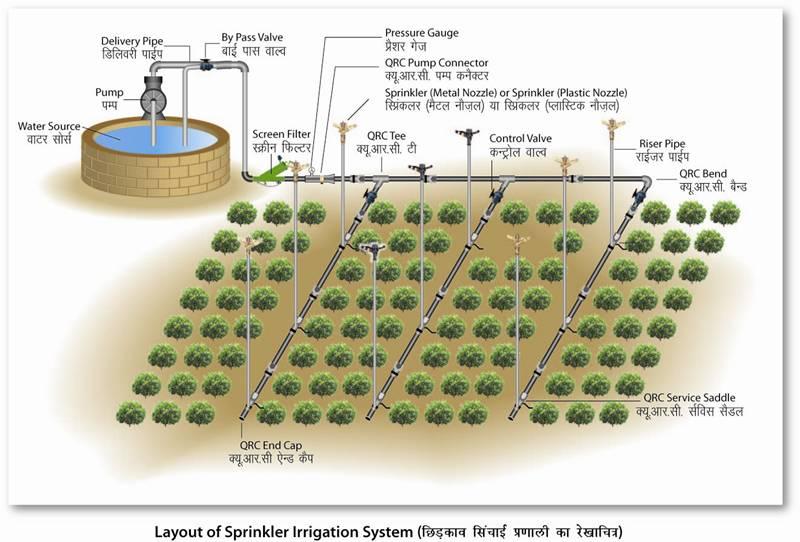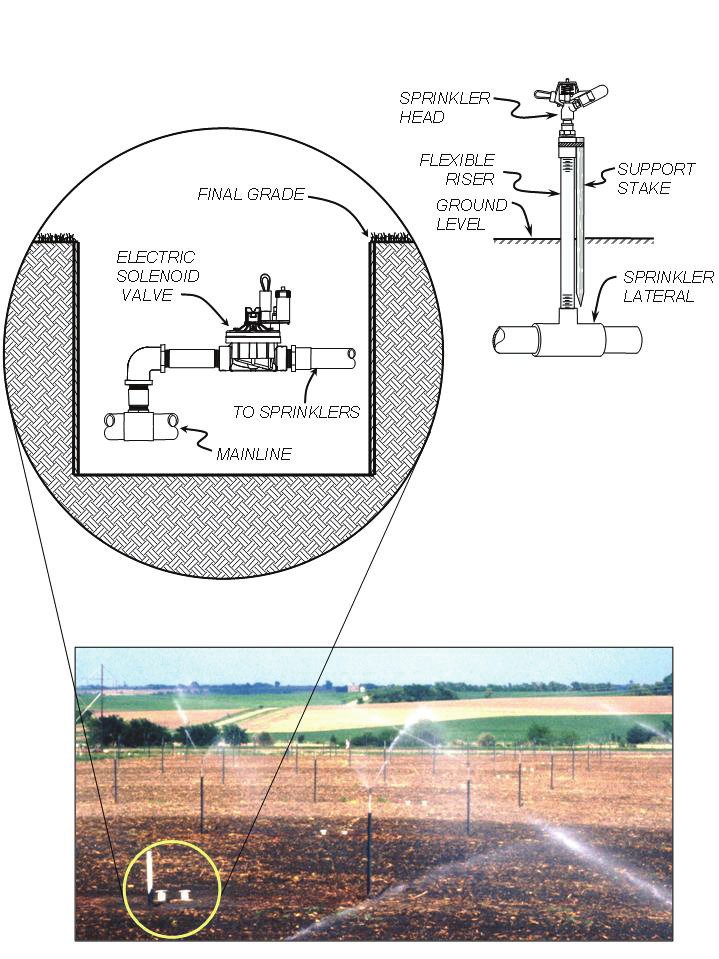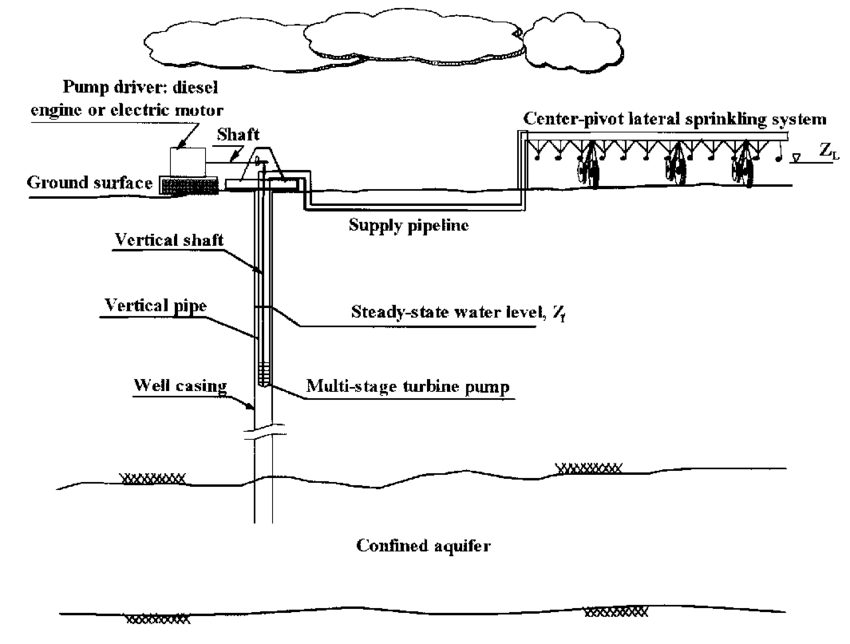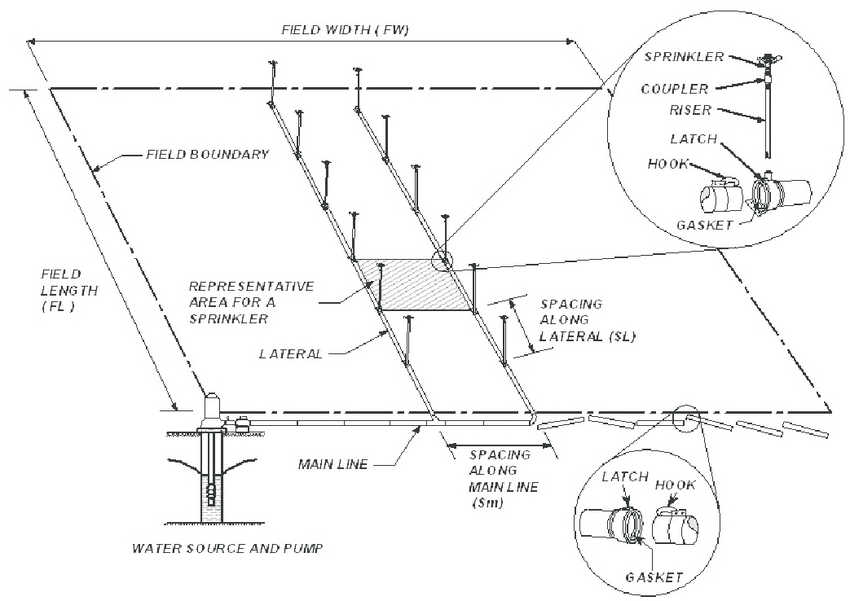SPRINKLER TECHNICAL TCE
Technical Data Sheet
Product: Sprinkler Irrigation System
Application: Agricultural and landscape irrigation
1. System Overview
A sprinkler irrigation system distributes water through a network of pipes, usually by pumping, and sprays it into the air through sprinklers so that it breaks up into small water drops and falls to the ground.
2. Main Components
| Component | Description |
|---|---|
| Pump Unit | Provides required pressure to distribute water |
| Mainline & Laterals | PVC, HDPE, or polyethylene pipes used to transport water |
| Sprinkler Heads | Devices that spray water in desired patterns |
| Control Valves | Regulate water flow and pressure |
| Filtration Unit | Prevents clogging of sprinklers |
| Pressure Regulator | Maintains optimal pressure in the system |
| Control System | Timer or sensor-based automation (optional) |
3. Technical Specifications
| Parameter | Typical Value / Range |
|---|---|
| Operating Pressure | 1.5 – 4.0 bar |
| Discharge Rate | 0.5 – 3.0 m³/hour per sprinkler |
| Sprinkler Radius | 5 – 18 meters (adjustable) |
| Nozzle Size | 2 – 5 mm diameter |
| Water Distribution | 70% – 90% efficiency |
| Recommended Spacing | Depends on sprinkler radius and wind conditions |
| Filtration Requirement | 120 mesh (for typical sprinklers) |
4. Materials
Pipes: UV-stabilized PE or PVC
Sprinklers: UV-resistant plastic, brass, or stainless steel
Fittings: Quick-connect, threaded, or compression types
Seals & Gaskets: EPDM or silicone
5. Operating Conditions
Ambient Temperature: 5°C – 50°C
Water pH Range: 6.0 – 7.5
Water Quality: Clean water, filtered, with low sediment content
6. Advantages
Uniform water application
Suitable for various soil types and crops
Reduces manual labor
Compatible with automation systems




